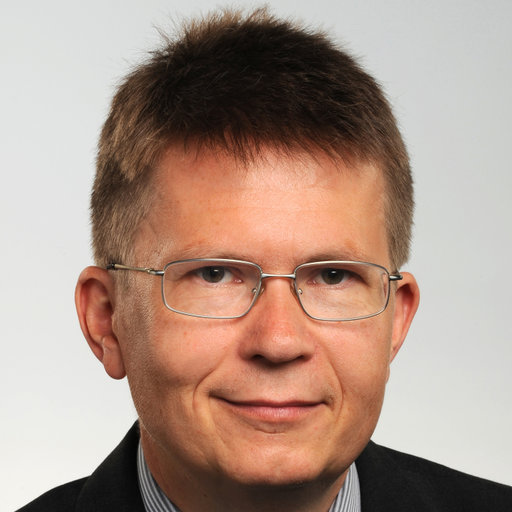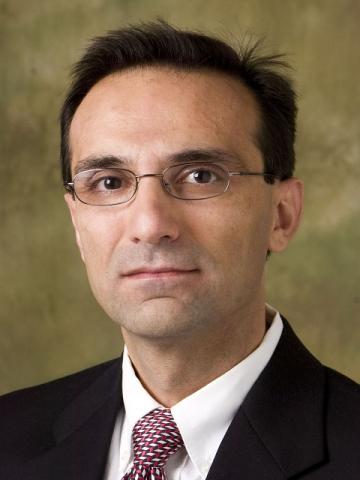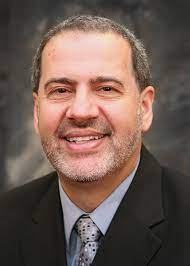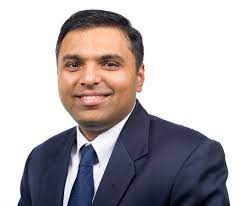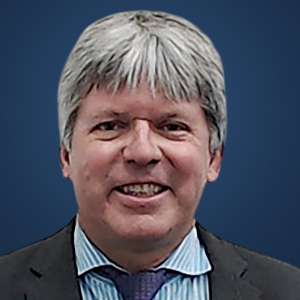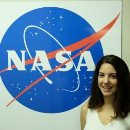Theme: New Advancements and Developments in Satellite Communications
Satellite communication-2022
- About Conference
- Sessions and Tracks
- Participation / presentation option
- Abstract Submission Guidelines
- VISA requirements
- Market Analysis
Conference Series LLC Ltd welcomes you to attend the 15th International conference on satellite communication during December 01-02, 2022 Taipei, Taiwan. The conference is an amalgamation of research professionals from universities, space centres, research labs, spacecraft industries and other space research organizations creating an atmosphere conducive for information exchange between academia and industries. Participating at SATELLITE COMMUNICATION-2022 will provide an exceptional opportunity to interact with scientists and research scholars in this fields creating a channel for collaborations and partnerships.
Importance and Scope:
Satellite communication plays a vital role in the Global telecommunications system. The satellites are launched into the space to monitor the cloud patterns for the weather prediction, and to send television signals, communication signals. The satellites are used for many applications such as communication, oceanography, astronomy, and army surveillance. The communication satellites have the ability to rapidly communicate between a numbers of widely dispersed locations. The astronomy satellites are mounted on earth orbiting satellites or on the space probes and they can give us an unobstructed view without the interference of earth’s atmosphere. The importance of satellite research is increasing with innovative techniques and advancements, perhaps more approaches need to be developed.
Not many people are aware of the fact that a major part of the day-to-day communication happens through the satellite and not ground cables. There was a time when ground cabling carried a vast portion of communication, but today it is assisted by new satellites, especially geostationary models, helping almost continuous and total global coverage. This almost incessant global coverage assists in the realization of a lot of remote healthcare services, like remote health monitoring, emergency communication, assistance in search or rescue operations, and very recently trend is extended to tele-diagnosis. These along with several other associated services can now be implemented at almost any under-services or remote location on the Earth. This would have been impossible without satellite communications.
Satellite Communication 2022 aims to bring scientists, space researchers, professors, mechanical engineers, aerospace engineers, business delegates from aeronautical and space related organizations, young researchers and scholar’s altogether to exchange and share their experiences and research results. It provides a chance to active researchers to explain the recent progress, trends, advancements in the fields of satellite and space research and the solutions they came up with practical problems faced during the phases of research.
Young Scientist Benefits
Our conferences provide best Platform for your research through oral presentations.
Share the ideas with both eminent researchers and mentors.
Young Scientist Award reorganization certificate and memento to the winners
Young Scientists will get appropriate and timely information by this Forum.
Platform for collaboration among young researchers for better development
Award should motivate participants to strive to realize their full potential which could in turn be beneficial to the field as whole.
Why to attend???
15th International conference on satellite communication is an outstanding Satellite Conference with the best Scientific Program that anticipates the world's leading eminence involved in Satellite and Space Missions. Satellite Event is an exciting opportunity to demonstrate the new technology, recent techniques, and the updates in Satellite and Space Mission fields to the world's renowned speakers.
Target Audience:
Scientists
Spacecraft and satellite engineers
Satellite launch vehicle manufacturers/ operators
Marshals and admirals in army
Space agency executives
Deans and professors from academia
Satellite and space researchers
Geophysicists
Marketing executives
Satellite association heads
Spacecraft ground control operators
Remote sensing agencies
Earth science researchers
Geologists
Young research scholars
Students
Scientific Sessions:
Satellite and its applications:
Aerospace and Mechanical Engineering:
Remote Sensing Satellites and GIS
Space Missions
Space Exploration
Artificial satellites and Space Structures
Communications Satellite
Satellite Navigation and Communication
Earth Observation Satellites
Weather Satellites
Military Satellites
Satellite Networks
Mobile Satellite Communication Networks
Satellite Subsystems
Satellite Radiance
Satellite Dish
Earthquake and structural dynamics
Climate change and Weather Forecasting
Materials Science and Applications in Science
Earth Science
Track 1: Orbital Mechanics:
Orbital mechanics is primarily concerned with motions under gravity, either as a single force or in conjunction with other forces such as thrust, drag, lift, light pressure, and others. It has a long history as a topic, with the motions of the planets, Moon, and Sun studied since ancient times and a scientific foundation beginning around 500 years ago. With the advent of human-built spacecraft, the focus has shifted from simply observing the motions of natural bodies to planning and carrying out missions
Track 2: Satellite Communication:
Satellite communication in telecommunication the use of artificial satellites to provide communication links between various points on Earth. Satellite communications are critical components of the global communications system. Approximately 2,000 artificial satellites orbiting the Earth relay analogue and digital signals carrying voice, video, and data to and from one or more locations around the world
Track 3: Power & Antenna Subsystems:
The antenna subsystem is complicated mechanical assemblies that are folded into dense packet for launch and must be deployed in large accurately alight assembly during orbit.control sub system provide tracking signal for precise pointing of antenna towards the earth coverage area. Satellite communication system uses a variety of antenna system. This maybe linear dipole helix horn antenna array and parabolic reflector However, the parabolic reflector is most commonly used antenna as it gives a highly directional symmetric radiation pattern
Track 4: Transponders:
A transponder is a type of communication device that can either send or receive signals (or both). With a special transponder in your car, you can drive slowly through a tollbooth while your toll is electronically collected. The term transponder is a portmanteau or a combination of two words into one in this case, it comes from transmit and respond. Airplanes have transponders that communicate with radar used by air traffic controllers on the ground, and race cars have transponders that help them time their laps accurately
Track 5: Earth Segment Subsystems:
Several operations take place in a satellite communication system The main operations are orbit control, satellite altitude control, and monitoring and control of other subsystems. A satellite communication system is divided into two parts. These are the space and earth segments As a result, there will be two kinds of subsystems space segment subsystems and earth segment subsystems The diagram below depicts this concept
Track 6: Satellite Launching:
The process of placing the satellite in a proper orbit is known as launching process. During this process, from earth stations we can control the operation of satellite. Mainly, there are four stages in launching a satellite
Track 7: Look Angles & Orbital Perturbations:
If the earth station is directly beneath the satellite, it will receive the maximum signal level. Otherwise, it will not receive the maximum signal level, which decreases as the difference between the earth station's latitude and longitude increases. As a result, we can place the satellite in a specific orbit based on the requirements. Let us now discuss the look angles
Track 8: Global Positioning System:
The Global Positioning System, formerly Navistar GPS, is a satellite-based radio navigation system owned by the US government and operated by the US Space Force. It is one of the global navigation satellite systems that provide geolocation and time information to a GPS receiver anywhere on or near the Earth where four or more GPS satellites have an unobstructed line of sight
Track 9: Satellite Orbits:
A satellite is an object that is in orbit around the Earth. Satellites do not all orbit in the same way, and there are several terms to describe the various types of orbit. A satellite in geostationary orbit is one that orbits the Earth just above the equator at the same speed and direction as the Earth, making it appear stationary to a terrestrial observer
Track 10: Orbit Velocity:
Orbital velocity is the velocity required by satellites to stay in their orbits. The orbit or orbital pathway, whether elliptical or circular demonstrates a balance between the satellite's inertia which causes it to move in a straight line, and the gravity of this orbital velocity is now determined by the distance between the planet's center and the satellite orbiting it. This velocity applies to planets revolving around the sun just as much as it does to natural or artificial satellites revolving around a planet
Track 11: Geo-Stationary Orbits:
An object in such an orbit has an orbital period equal to Earth's rotational period one sidereal day, and thus appears motionless and fixed in space to ground observers. The concept of a geostationary orbit was popularised by science fiction writer Arthur C. Clarke in the 1940s as a way to revolutionise telecommunications, and the first satellite to be placed in this type of orbit was launched in 1963. Communications satellites are frequently placed in geostationary orbit so that Earth-based satellite antennas (located on Earth) do not have to rotate to track them but can be pointed permanently at the position in the sky where the satellites are located
Track 12: Spacecraft Technology:
Space technology is technology that is used in outer space, for astronautic travel, or for other activities beyond Earth's atmosphere, such as spaceflight, space exploration, and Earth observation. Deep-space communication, in-space propulsion and a wide range of other technologies such as support infrastructure equipment and procedures are examples of space technology, as are spacecraft, satellites, space stations, and orbital launch vehicles. Working in space is so novel that it frequently necessitates the development of new tools and techniques. Many common terrestrial services rely heavily on space infrastructure, including weather forecasting remote sensing, satellite navigation systems, satellite television, and some long-distance communications systems. Two of the sciences that benefit from space technology are astronomy and earth science. New technologies are being developed.
Track 13: Telemetry:
Telemetry refers to the collection of measurements or other data at remote locations and their automatic transmission to receiving equipment (telecommunication) for monitoring. The word comes from the Greek roots tele, which means "remote," and matron, which means "measure." Tele command is the telemetry counterpart for systems that require external instructions and data to operate.
Track 14: Antenna Subsystem:
Both satellites and earth stations have antennas. Let us now talk about satellite antennas. Satellite antennas serve two distinct purposes. Those who receive signals from earth stations and transmit signals to one or more earth stations based on the requirement. In other words, the satellite antennas both receive and transmit uplink signals The length of satellite antennas is known to be inversely proportional to the operating frequency. To reduce the length of satellite antennas, the operating frequency must be increased. As a result, satellite antennas operate at GHz frequencies
Oral Presentation: Oral presentations may include research, theoretical, professional or private practice topics in a concise manner. People with personal experience are also encouraged to submit personal experiences or stories that help others in daily life.
Speakers with a 30-minute slot should plan to speak for 20-25 minutes, and keynote speakers should plan to speak for 40-45 minutes, with the remaining time to be used for questions and discussion by the chair of the meeting session.
Workshop: For workshop presenters as well, the lecture topic will be the same as an oral presentation with more specialized techniques and detailed demonstration. The general duration of a workshop presentation is approximately 45-50 minutes. Interested participants can join their respective team and present the workshop with their research coordinators with special group waivers upon registration.
Poster Presentation: The Student Poster Competition will be held during the Bionic-2022 conference to encourage students and recent graduates to present their original research. Presenters will have approximately 5-7 minutes to present the poster, including questions and answers. Judges may ask questions when judging the presentation. This is an opportunity for young scientists to learn about recent discoveries from their peers in order to increase their capacity as multidisciplinary researchers. Poster displays will be in 1x1M long paper size.
For more details on poster presentation and judging criteria, see the poster presentation guidelines.
Webinar: The webinar presentation is designed for interested attendees who cannot attend in person due to scheduling conflicts or other obligations. In this option, the presenter can record the presentation and their presentation will be shown in the webinar presentation session.
E-Poster: E-Poster is also like the webinar presentation. At this session, their presentation will be published as a poster on the conference website and the presenter's abstract will be published in the conference memento and in the journal with DOI.
Exhibit: Satellite Communication 2022 may exhibit the products and services of commercial and non-commercial organizations such as artificial intelligence, digital talent, platform-based software and services, trade commissioners, and equipment manufacturers.
To learn more about exhibitor booth details and benefits, visit WHY EXHIBIT WITH US?
Send your questions to contact@globalannualmeet.com
Advertisement: The conference program is a valuable resource that all attendees refer to again and again as they navigate the conference. Advertising in the conference program is a great way to market and can help secure long-term business.
Send your proposal to contact@globalannualmeet.com for available ad options and pricing
Sponsor Satellite Communication 2022
Premium Referral Pack
Additional sponsorship package
Email the Program Manager at davidblake@globalannualmeet.com or WhatsApp at +44 7360538394 to inquire about sponsorship packages.
How to submit an abstract/article?
Abstract submissions are welcoming you all to submit abstracts on Satellite Communication 2022 topics. Please see below for submission guidelines.
Full abstracts accepted for registered attendees will be published in the open-access conference support journal and conference memorabilia.
Submit your abstracts via the online ABSTRACT SUBMISSION link
Abstracts should be submitted in English and should be between 250 and 300 words, along with a 60-70 word presenter biography.
Submissions are welcome on all topics related to Satellite Communication.
The presenting author should provide the following details: presenter's full name, affiliation details: department, institution/hospital, country, phone number, email address, and photograph
For co-authors, the following details are required: full names and affiliation details such as the name of the department, institute/organization, and country should be included
All abstracts will be reviewed by a review board approved by the Satellite Communication-2022 conference review board. The Committee's decision is final.
All accepted abstract presenters will be required to register and book a slot to attend the conference.
Please note that your affiliation and abstract title in the final program and in the journal will appear exactly as you submit them. Please, therefore, follow the guidelines provided as to the required format and the letter of acceptance does not imply any travel subsidy or scholarship.
Next steps
An email confirmation will be sent to you after the successful acceptance of the abstract by organizing committee members. If the abstract is accepted, presenters must confirm the presenter(s) and book a slot to confirm their presence at the conference. Failure to do so may result in your paper being excluded from the Satellite Communication 2022 conference program
How to complete registration?
To complete registration, visit the ONLINE REGISTRATION PAGE where the following registration categories are available
Entrants from academia/academic backgrounds must register their entry under the academic category
Registration options available in this category: Oral presentation | Poster presentation | Registration of delegates | Package A (includes your registration and 2 nights accommodation) | Package B (includes your registration and 3 nights accommodation) | Online seminar
The businessman must register his participation in the Business category
Registration options available in this category: Speaker Registration | Registration of delegates | Package A (includes your registration and 2 nights accommodation) | Package B (includes your registration and 3 nights accommodation) | Advertising | Exhibitor
Participants who are still pursuing their studies will register their participation in the student category.
Registration options available in this category: Speaker Registration | Poster presentation | Registration of delegates | Package (includes registration and 2 nights accommodation).
Apart from any category mentioned above, please email davidblake@globalconferences.info or WhatsApp +44 7360538394 for GROUP REGISTRATION, EXTRA NIGHT ACCOMMODATION, ADVANCE PAYMENT OF TOKEN, MORE THAN ONE PRESENTATION, etc. These options are available upon special request and discussion with management.
The Satellite Communication-2022 Organizing Committee hereby reiterates that we are NOT involved in VISA processing. We can help you by providing supporting documents such as an invitation letter, abstract acceptance letter, and registration payment receipt.
You may need to submit additional documents along with these documents to the embassy.
Invitation Letter: The official invitation letter is proof that your submitted paper and registration request are accepted by the conference board. It will be indicated in English and can help you with your visa application.
* Only registered participants will receive an official invitation letter
* Participants must complete registration and submit authenticated information to obtain an official invitation letter [i.e. passport (scanned copy), date of birth, mobile phone number, physical address, and a photograph].
*Contact the program manager for more information
• Official invitation letters will be provided only to attend the conference.
** IF YOUR APPLICATION IS TURN DOWN THEN THE ORGANIZING COMMITTEE OF SATELLITE COMMUNICATION-2022 CAN NOT CHANGE THE DECISION OF THE DEPARTMENT OF FOREIGN AFFAIRS AND WE WILL NOT HEAR ANY DISCUSSION OR CORRESPONDENCE WITH THE IND, MOFA OR EMBASSY ON BEHALF OF THE CANDIDATE **
Satellite Communication Market Research Reports & Consulting
The satellite communication industry is continuously evolving, and the demand for the next generation satellite communication has increased more than ever. Currently, traditional communication system, called point-to-point links such as ground wave propagation and sky wave propagation, has a limitation of the station distance of 1,200KM–1,500KM. Satellite communication overcomes this distance limitation beyond imagination. The advantages of the satellite communication are more area coverage than the terrestrial systems, wide spread coverage to each corner of the earth, more bandwidth and broadcasting possibilities, and the flexibility in the associated cost of the communication based on coverage area. Such advantages help satellite communication to provide superior performance in terms of speed uniformity and uninterrupted communication compared to other forms of communication.
The emergence of new applications has fueled the growth of satellite communication industry. Various applications, such as audio broadcasting and voice communications; broadcasting, such as Direct to Home (D2T); internet applications, such as providing internet connection for data transfer, GPS applications, and internet surfing; military applications and navigations; remote sensing applications; and weather condition monitoring and forecasting.
The satellite communication domain tracks the market trends in Satellite Equipment, Technology, Communication Network Device, and Service segments. The Satellite Equipment segment covers Receiver, Transmitter/Transponder, Transceiver, Antenna, and Modem/Router. The Satellite Technology segment includes Satcom VSat, Satcom-On-The-Move (SOTM), Satcom-On-The-Pause (SOTP), Satcom Telemetry, and Satcom Automatic Identification System. The Communication Network Device segment covers Satellite Internet Protocol Terminals, Satellite Modems, and Gateways. The associated Services in the satellite communication are Managed Services, Data Services, Voice Services, Business Services, and others.
Conference Highlights
To share your views and research, please click here to register for the Conference.
To Collaborate Scientific Professionals around the World
| Conference Date | December 01-02, 2022 | ||
| Sponsors & Exhibitors |
|
||
| Speaker Opportunity Closed | |||
| Poster Opportunity Closed | Click Here to View | ||
Useful Links
Special Issues
All accepted abstracts will be published in respective Our International Journals.
Abstracts will be provided with Digital Object Identifier by




